Atractylodes is a commonly used herb in the field of gastroenterology for its ability to eliminate dampness. Due to its aromatic scent, it is believed to ward off epidemics and expel evil spirits, proving effective against viral colds, especially COVID-19, in northern regions. There are six species of Atractylodes in China: Nan Cang Zhu (Southern Atractylodes), Bei Cang Zhu (Northern Atractylodes), Chao Xian Cang Zhu (Korean Atractylodes), Guan Cang Zhu (Guan Atractylodes), E Xi Cang Zhu (E Xi Atractylodes), and Bai Zhu (White Atractylodes).① Nan Cang Zhu is produced in East and Central South China, with the authentic medicinal material from the Maoshan area in Jiangsu known as “Mao Cang Zhu.”② Bei Cang Zhu is primarily produced north of the Qinling-Huaihe line, with authentic material from Chengde, Hebei.③ Chao Xian Cang Zhu grows in the Qianshan area of Liaoning, with small distributions in Jilin and Inner Mongolia. Due to geographical overlaps with Bei Cang Zhu, they share a close genetic relationship.④ Guan Cang Zhu is mainly produced in the Northeast, Inner Mongolia, and Hebei regions. Its active components are primarily “cangzhu ketone,” and it contains chemical constituents similar to Bai Zhu, suggesting its effects are closer to Bai Zhu.⑤ E Xi Cang Zhu has underdeveloped roots and lacks medicinal value.⑥ Bai Zhu: Its clinical medicinal effects differ significantly from those of Cang Zhu, and they are distantly related, so this article will not focus on it. Bai Zhu is primarily produced in Zhejiang and Anhui. The six species of Atractylodes have different main production areas, soil conditions, light climates, and medicinal effects, making it difficult to distinguish them during application. The following briefly discusses their identification and medicinal value.1. Identification Except for E Xi Cang Zhu, the identification of the other five species of Atractylodes is as follows:1. Identification of the original plants:

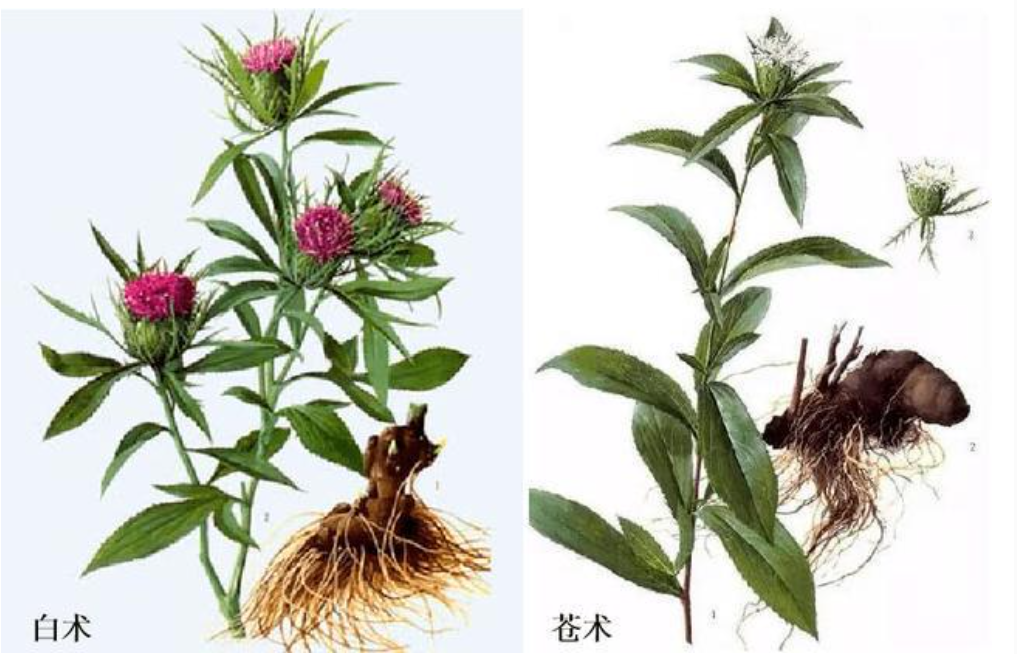
2. Identification of processed slices: According to the “Chinese Pharmacopoeia” (latest edition – 2020), the sources of Atractylodes include only the dried rhizomes of the Compositae plants Mao Cang Zhu or Bei Cang Zhu; the identification of the two processed slices is as follows:
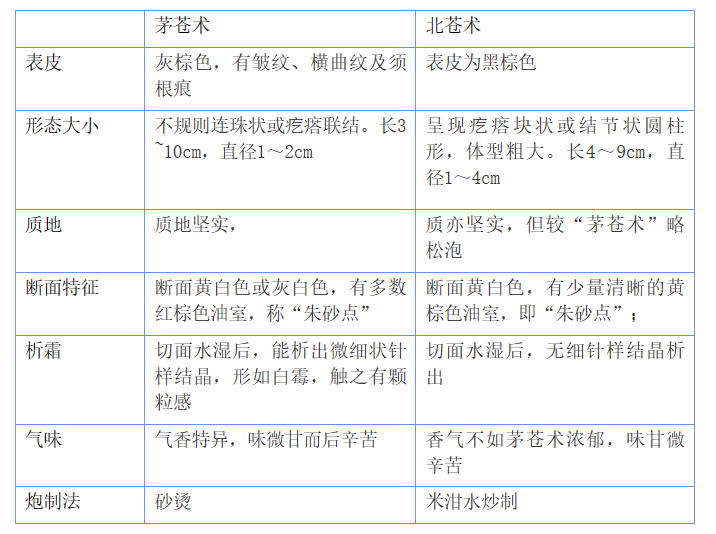 Note: “Frosting” is different from mold; moldy Atractylodes feels sticky and slippery to the touch, has a fishy and bitter smell, and the mold appears yellow-green.
Note: “Frosting” is different from mold; moldy Atractylodes feels sticky and slippery to the touch, has a fishy and bitter smell, and the mold appears yellow-green.
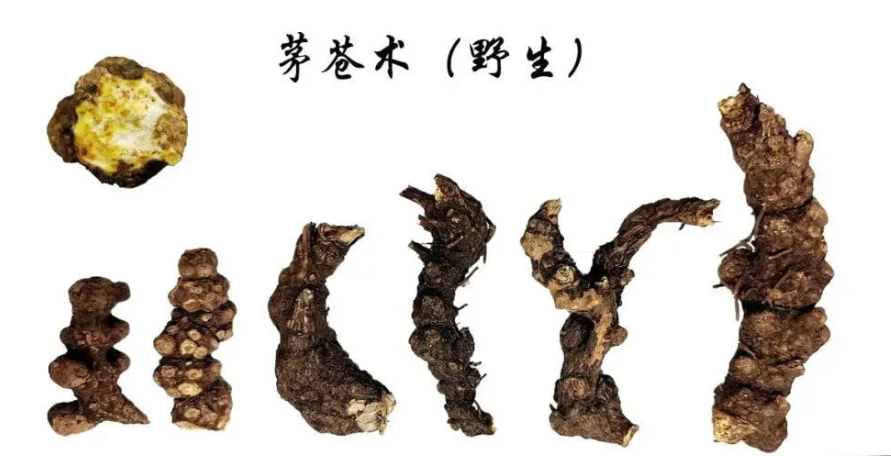

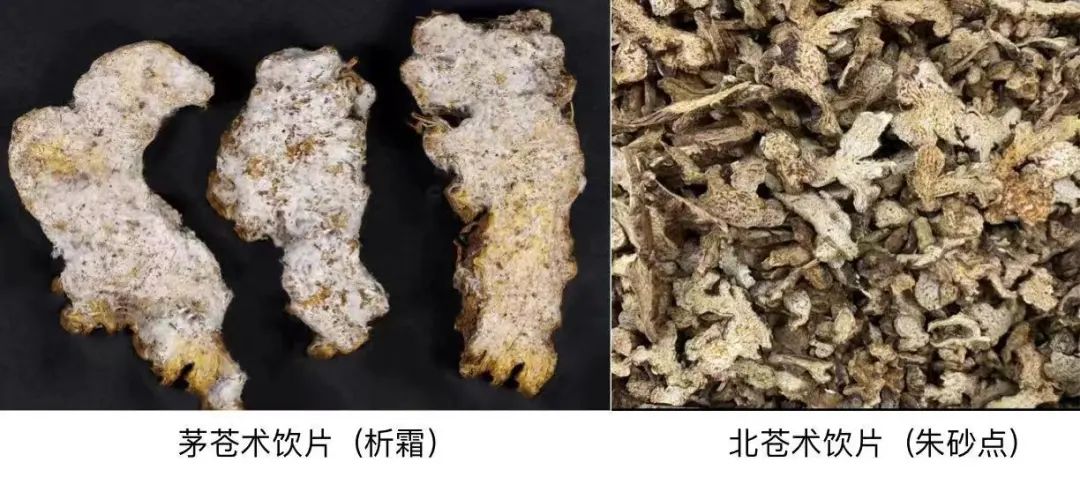
“Adapt to the time and place,” although both types of processed slices are included in the pharmacopoeia, the authentic medicinal materials grow in different environments, leading to different effects; however, the nature is derived from the form. Bei Cang Zhu has a loose texture, while Mao Cang Zhu is solid, and the aroma is not as strong, thus the pungent and aromatic nature of Bei Cang Zhu is not as strong as that of Mao Cang Zhu. Modern pharmacological studies suggest that the volatile oil content of Mao Cang Zhu (5-9) is about twice that of Bei Cang Zhu (3-5), which can also support this.
In addition to the two types included in the pharmacopoeia, Guan Cang Zhu also has relevant medicinal value, with the most significant feature of its processed slices being the absence of “vermilion spots,” as seen in the image.
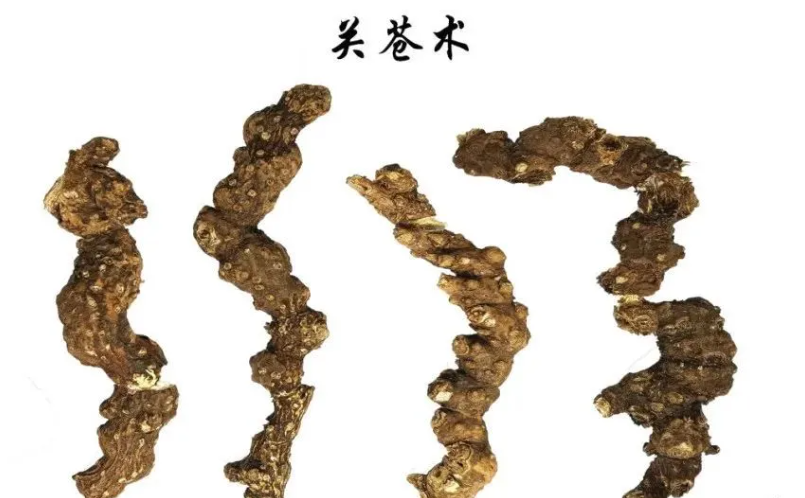
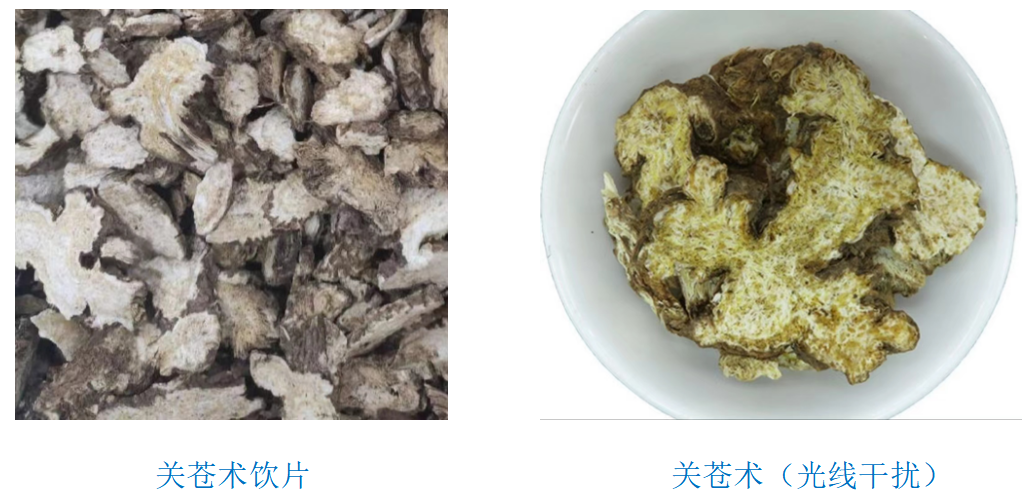
2. Clinical Medicinal Value Currently, the market for medicinal herbs primarily features Bei Cang Zhu, with the best quality from Chengde, Hebei. The highest quality wild resources of Mao Cang Zhu have gradually become scarce, and cultivated Atractylodes, whether in external morphology or internal volatile oil and cangzhu polysaccharide content, differ slightly from wild varieties and do not meet pharmacopoeia standards. The Northeast region produces a large amount of Guan Cang Zhu, which is often mixed with Bei Cang Zhu for use. However, modern pharmacological studies suggest that the chemical composition of Guan Cang Zhu is closer to Bai Zhu, with its effects primarily focused on antiviral and anticancer properties, while its ability to regulate gastrointestinal function and anti-inflammatory effects are relatively weak. Additionally, the polysaccharides in Guan Cang Zhu provide some hypoglycemic effects similar to Bai Zhu, but it loses the hepatoprotective and liver toxicity-inhibiting effects of Cang Zhu polysaccharides; there is little research on Chao Xian Cang Zhu, and its usage is also limited.Cang Zhu is pungent, bitter, and warm, entering the spleen, stomach, and liver meridians; it dries dampness, strengthens the spleen, expels wind and cold, and brightens the eyes. Clinically, it is used to treat damp stagnation in the middle jiao, abdominal distension, diarrhea, wind-damp bi pain, wind-cold colds, and night blindness. When purchasing, choose the one with a strong aroma, as the human body seeks the thick earth energy, and the strong aromatic scent indicates a strong damp-drying nature, expelling wind and dampness, and restoring the operation of the middle jiao.Applications:① Decoction: The damp-drying and bi-expelling effects of Cang Zhu can be utilized by decocting it in water or soaking it for drinking, which is simple and practical for eliminating dampness from the organs and body surface.② Incense: Using the aromatic scent of Cang Zhu to make incense has the effect of dispelling wind-cold, warding off epidemics, and expelling evil spirits. As recorded in the “Medical Experience Record,” “put four taels of Cang Zhu into the furnace for smoking, and patients who smell it will experience relief from headaches and nasal congestion.” The “Miscellaneous Techniques of the Seasons” states: “On New Year’s Day, burn Cang Zhu and take Cang Zhu soup for good fortune.” Tao Yinju explained: “Cang Zhu can eliminate evil energy and disasters; burning Cang Zhu on New Year’s Day can ward off evil spirits.” There is also a record in the “New Compilation of Verified Formulas”: “Cang Zhu powder and red dates, mixed into pills the size of a bullet, can be burned from time to time to prevent epidemics.” Currently, Cang Zhu can be used to dispel foul and turbid air from the COVID-19 virus; those with conditions can put Cang Zhu into a furnace or grind it into powder for incense, while those without appropriate facilities can place it directly in their wardrobe.
Note: When purchasing Cang Zhu, choose the aromatic Bei Cang Zhu, and the processed slices should be of raw material for the best quality, as distinguishing the quality of Cang Zhu after it has been fried is difficult.
Written by: Yin RuiqiReviewed by: Shi LijieWeChat Editor: Huang Pingbo Follow “Xinglin Shimen” Please long-press the QR code below to follow us or return to the top of the article and click the blue “Xinglin Shimen” to follow us
Follow “Xinglin Shimen” Please long-press the QR code below to follow us or return to the top of the article and click the blue “Xinglin Shimen” to follow us

